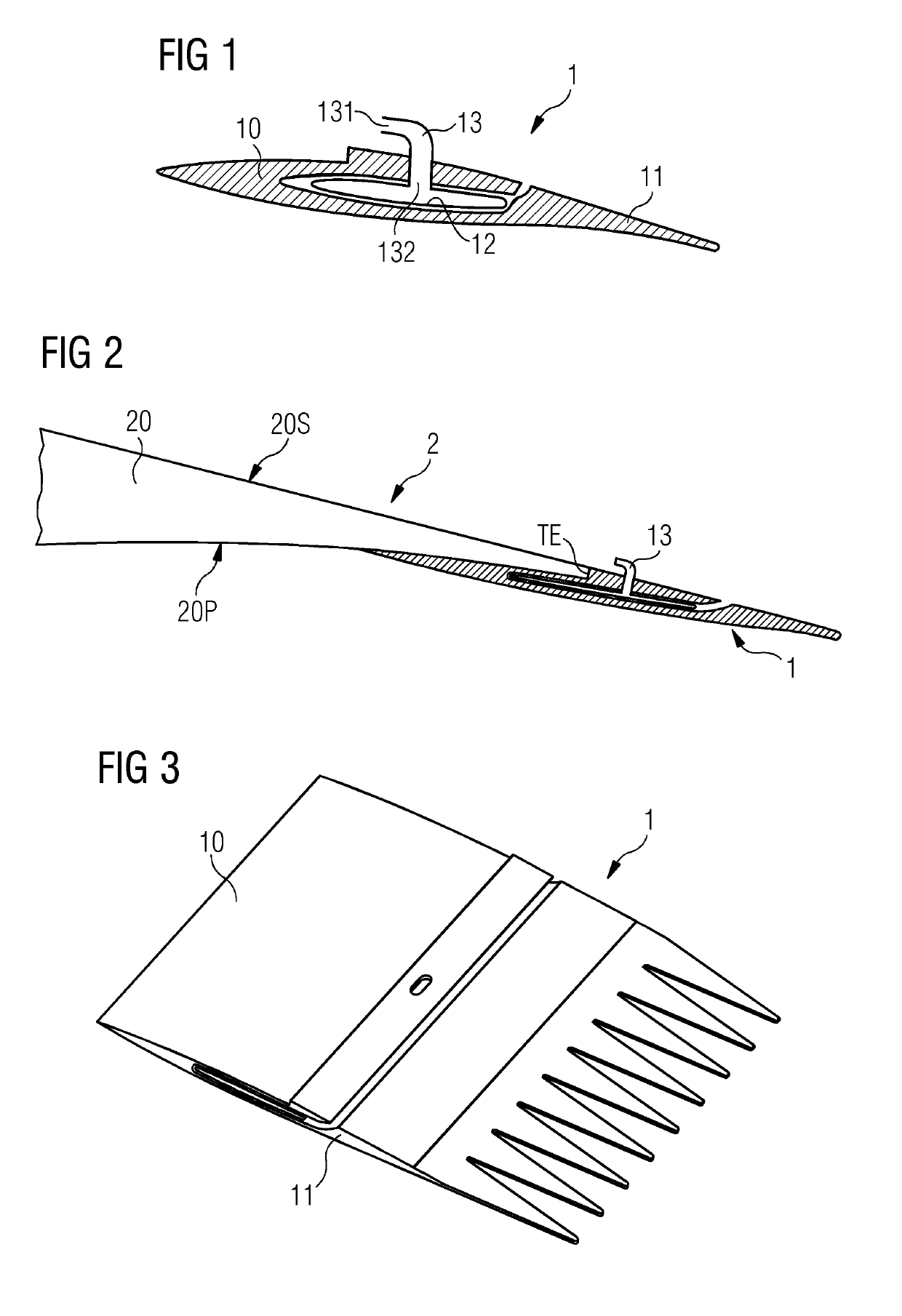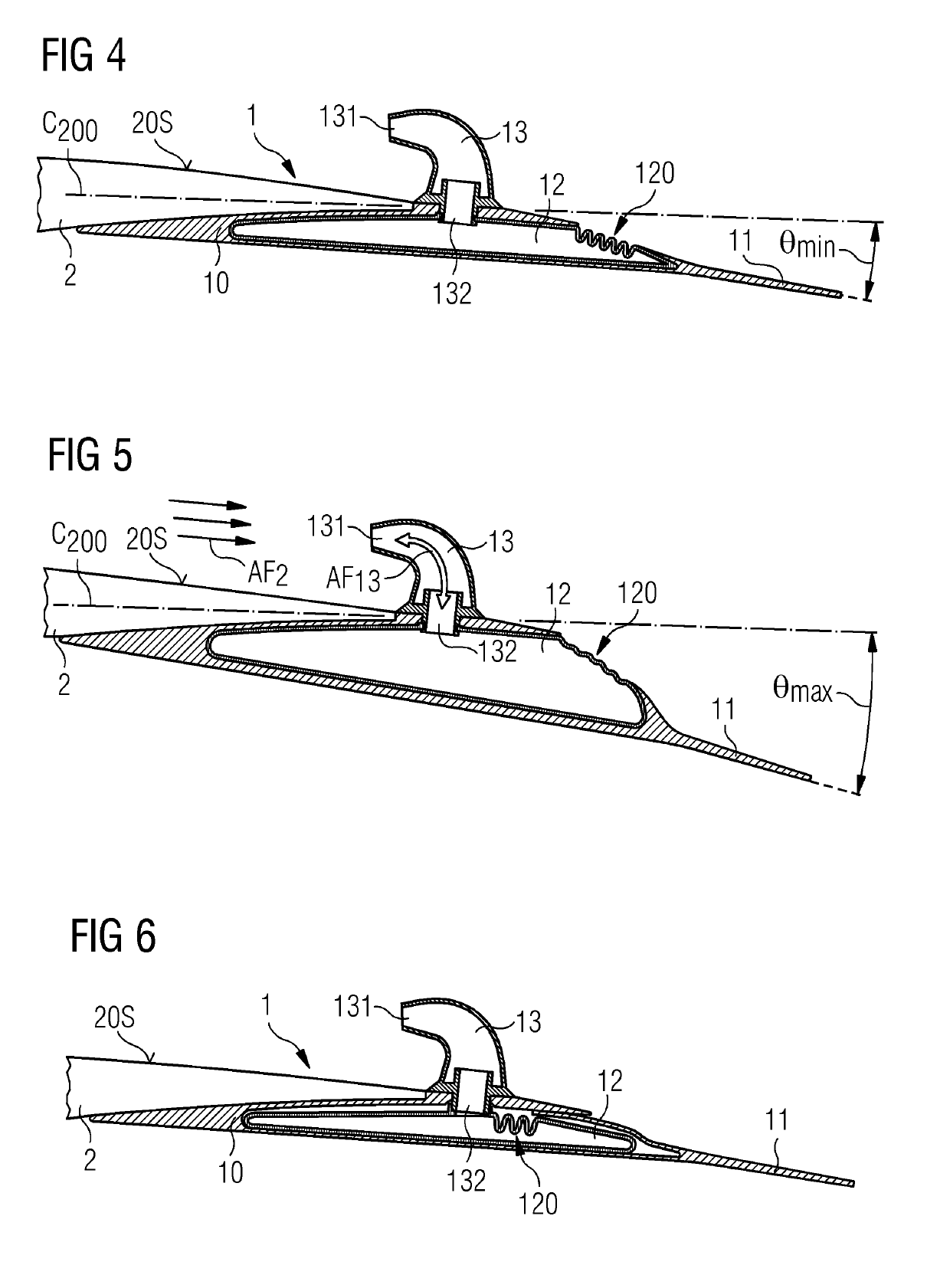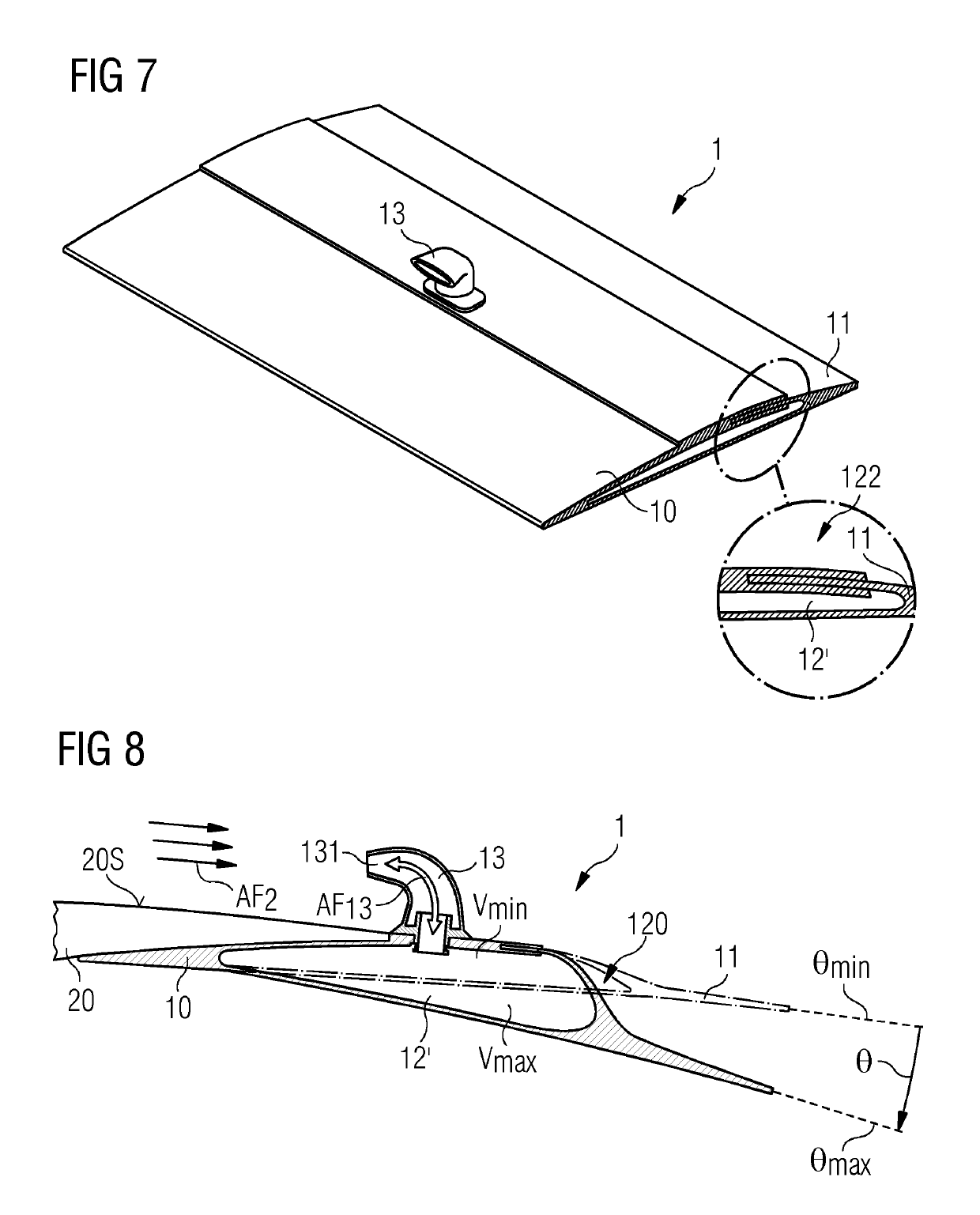Trailing edge assembly
a technology of wind turbines and rotor blades, which is applied in the direction of motors, passive/reactive control, engine fuction, etc., can solve the problems of rotor blades subject to aerodynamic loads, rotor blades and wind turbine supporting structures are subject to fatigue loads, and the atmospheric wind is rarely steady, so as to achieve more economical and straightforward effects
- Summary
- Abstract
- Description
- Claims
- Application Information
AI Technical Summary
Benefits of technology
Problems solved by technology
Method used
Image
Examples
Embodiment Construction
[0050]FIG. 1 shows a cross-section through an embodiment of the inventive trailing edge assembly 1 or passive flap system 1. The passive flap system 1 has a mounting portion 10 shaped for mounting to an airfoil region of a rotor blade, and a flap portion 11 that is flexibly connected to the mounting portion 10. In all the embodiments described herein, the flexible connection is achieved by using a suitably elastic material. The material “hinge” allows a flap angle subtended between the mounting portion 10 and the flap portion 11 (indicated in FIG. 5 and FIG. 8) to be altered smoothly. In this embodiment of the inventive passive flap system, an inflatable hose 12 or balloon-like body 12 is arranged between the mounting portion 10 and the flap portion 11. A tube 13 extends through the mounting portion 10 and opens into the inflatable hose 12. The tube has an outer orifice 131 arranged to face into an airflow, and an inner orifice 132 arranged to face into the interior of the inflatabl...
PUM
 Login to View More
Login to View More Abstract
Description
Claims
Application Information
 Login to View More
Login to View More - R&D
- Intellectual Property
- Life Sciences
- Materials
- Tech Scout
- Unparalleled Data Quality
- Higher Quality Content
- 60% Fewer Hallucinations
Browse by: Latest US Patents, China's latest patents, Technical Efficacy Thesaurus, Application Domain, Technology Topic, Popular Technical Reports.
© 2025 PatSnap. All rights reserved.Legal|Privacy policy|Modern Slavery Act Transparency Statement|Sitemap|About US| Contact US: help@patsnap.com



